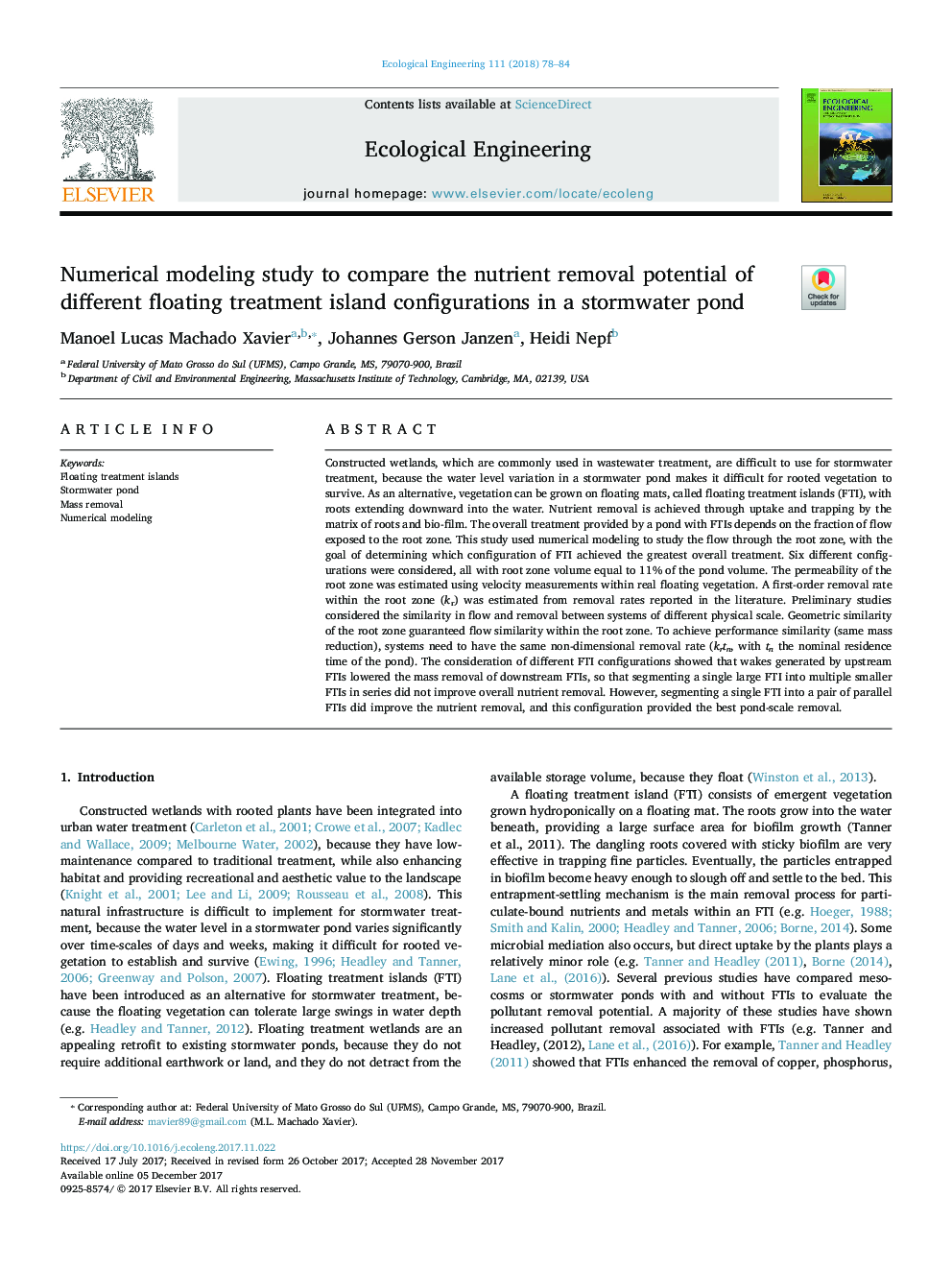| Article ID | Journal | Published Year | Pages | File Type |
|---|---|---|---|---|
| 8848096 | Ecological Engineering | 2018 | 7 Pages |
Abstract
Constructed wetlands, which are commonly used in wastewater treatment, are difficult to use for stormwater treatment, because the water level variation in a stormwater pond makes it difficult for rooted vegetation to survive. As an alternative, vegetation can be grown on floating mats, called floating treatment islands (FTI), with roots extending downward into the water. Nutrient removal is achieved through uptake and trapping by the matrix of roots and bio-film. The overall treatment provided by a pond with FTIs depends on the fraction of flow exposed to the root zone. This study used numerical modeling to study the flow through the root zone, with the goal of determining which configuration of FTI achieved the greatest overall treatment. Six different configurations were considered, all with root zone volume equal to 11% of the pond volume. The permeability of the root zone was estimated using velocity measurements within real floating vegetation. A first-order removal rate within the root zone (kr) was estimated from removal rates reported in the literature. Preliminary studies considered the similarity in flow and removal between systems of different physical scale. Geometric similarity of the root zone guaranteed flow similarity within the root zone. To achieve performance similarity (same mass reduction), systems need to have the same non-dimensional removal rate (krtn, with tn the nominal residence time of the pond). The consideration of different FTI configurations showed that wakes generated by upstream FTIs lowered the mass removal of downstream FTIs, so that segmenting a single large FTI into multiple smaller FTIs in series did not improve overall nutrient removal. However, segmenting a single FTI into a pair of parallel FTIs did improve the nutrient removal, and this configuration provided the best pond-scale removal.
Related Topics
Life Sciences
Agricultural and Biological Sciences
Ecology, Evolution, Behavior and Systematics
Authors
Manoel Lucas Machado Xavier, Johannes Gerson Janzen, Heidi Nepf,
